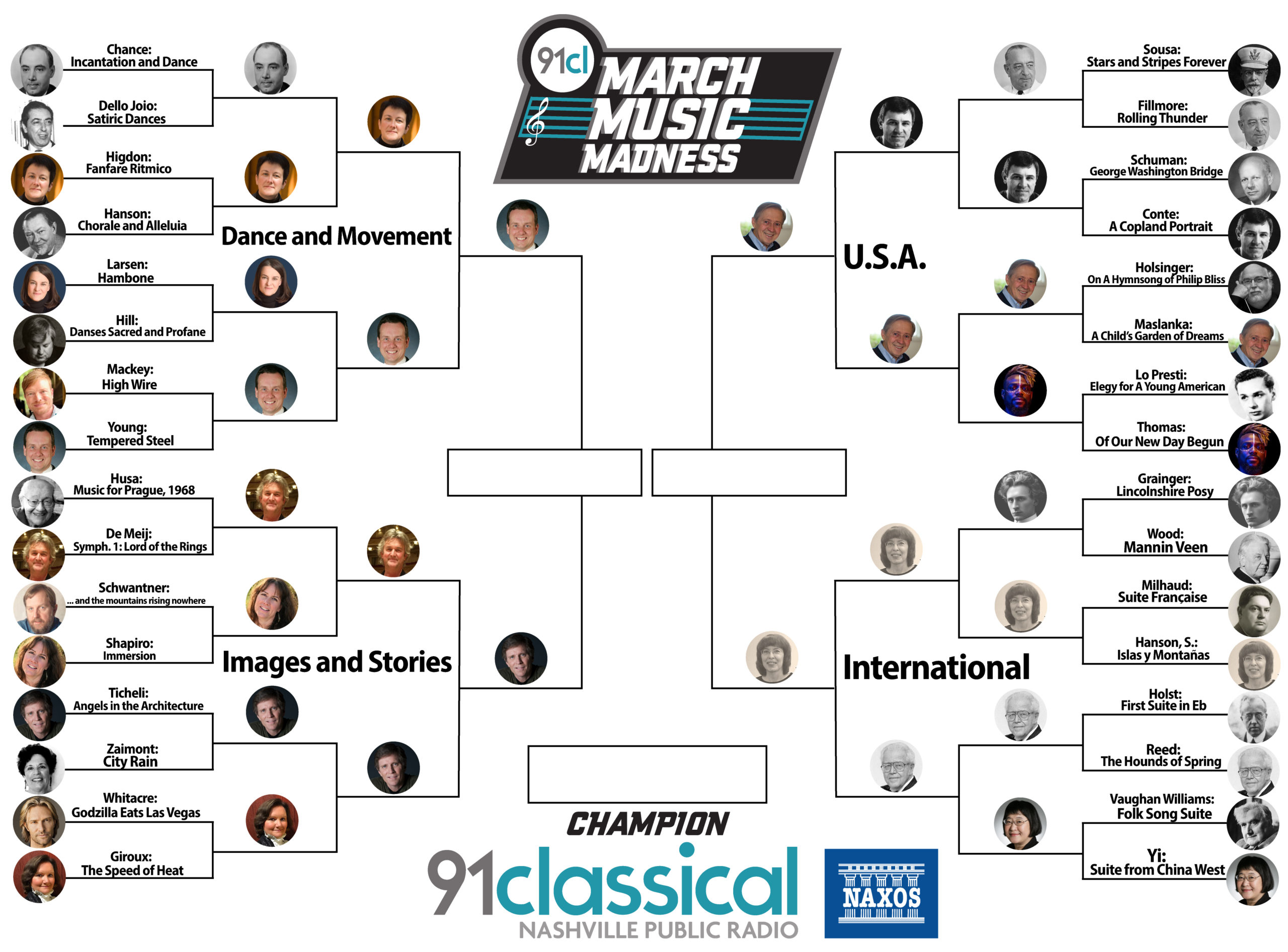
All of the quarter-finalists in our March Music Madness tournament were pieces that told fascinating stories. But, only four can continue in the tournament. So today we bid farewell to those not moving on.
Jennifer Higdon was recently in Nashville for the Nashville Symphony’s performance of her Concerto for Low Brass. While Fanfare Ritmico was composed for the turn of the millenium, its excitement has made it a popular favorite for winds for the last two decades. It’s worth noting that the piece was part of the Women’s Philharmonic’s Fanfares Project, self-described by the orchestra as the “single largest commissioning of new music by women composers ever.” For the initiative, the orchestra collected ten fanfares composed by women. Now, the New York Philharmonic’s Project 19 has raised the bar even farther. But both of these commission projects were for orchestra. As far as we could find, no similar initiative has yet existed for wind ensemble.
When Johan de Meij wrote his Symphony No. 1, The Lord of the Rings was only a thought in the back of the minds of Hollywood. But the book had certainly fascinated millions of readers by the mid 1950s, when de Meij started composing. Each movement illustrates figures from the books. Rather than taking the standard form of a symphony, the piece feels like a collection of tone poems bringing J.R.R. Tolkien’s characters to life.
Composer David Conte was one of the last students of famed pedagogue Nadia Boulanger. It was through Boulanger, who had taught Aaron Copland 50 years earlier, that Conte was able to correspond with Copland. Eventually Conte met the composer for research in his personal library. A favorite story of Conte’s from that time was quoting Virgil Thompson’s assertion that “nothing new had happened in music since 1933.” To which Copland, nearly 90 years old, replied, “The old hound!” Given the close connection the two composers shared at the end of Copland’s life, no one was more qualified to give an honest and intimate portrayal of Aaron Copland than David Conte, as he did in Copland Portrait.
There were a lot of exciting and energetic pieces in the full bracket, but perhaps none brought the brightness of Alfred Reed’s The Hounds of Spring. The piece is based on the Swinburne poem Atalanta in Calydon. Specifically, the following quote:
When the hounds of spring are on winter’s traces,
The mother of months in meadow or plain
Fills the shadows and windy places
With lisp of leaves and ripple of rain;
And the brown bright nightingale amorous
Is half assuaged for Itylus,
For the Thracian ships and the foreign faces,
The tongueless vigil, and all the pain.
Youthful excitement and innocent love abound in the piece.
The final four are two interesting pairs. Will Charles Rochester Young’s Tempered Steel outlast Frank Ticheli’s Angels in the Architecture? And will Shelley Hanson’s Islas y Montanas dance all over the fascinatingly Jungian stories of David Maslanka’s A Child’s Garden of Dreams? Vote now to help decide.
Here is the updated bracket:
